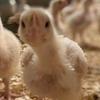Broiler Chicken Stunning Methods During Slaughter





Abeyesinghe, S. M., McKeegan, D. E. F., McLeman, M. A., Lowe, J. C., Demmers, T. G. M., White, R. P., Kranen, R. W., Bemmel, H. van, Lankhaar, J. A. C., & Wathes, C. M. (2007). Controlled atmosphere stunning of broiler chickens. I. Effects on behaviour, physiology and meat quality in a pilot scale system at a processing plant. British Poultry Science, 48(4), 406–423. https://doi.org/10.1080/00071660701543089
Berg, C., & Raj, M. (2015). A Review of Different Stunning Methods for Poultry-Animal Welfare Aspects (Stunning Methods for Poultry). Animals : an open access journal from MDPI, 5(4), 1207–1219. https://doi.org/10.3390/ani5040407
Bracke, M., de Jong, I., Gerritzen, M., Jacobs, L., Nalon, E., Nicol, C., O’Connell, N., & Porta, F. (2020). The Welfare of Broiler Chickens in the EU. https://www.eurogroupforanimals.org/files/eurogroupforanimals/202011/2020_11_19_eurogroup_for_animals_broiler_report.pdf
Electrical Waterbath Stunning of Poultry. (2015). Humane Slaughter Association. https://www.hsa.org.uk/downloads/hsagn7electricalwaterbathpoultry1.pdf
Lambooij, B. & Hindle, V. Electrical stunning of poultry. (2018). Advances in Poultry Welfare. Mench, J. A. editor. pp. 7798.
Mechanical methods—Non-penetrative captive-bolt. (n.d.). Retrieved April 22, 2022, from https://www.hsa.org.uk/mechanical-methods-poultry/non-penetrative-captive-bolt
Official Journal of the European Union (2009) Council Regulation (EC) No. 1099/2009 of 24 Sept. 2009 on the Protection of Animals at the time of killing. pp. 1-30.
Raj, A. B. M., & O’Callaghan, M. (2001). Evaluation of a pneumatically operated captive bolt for stunning/killing broiler chickens. British Poultry Science, 42(3), 295–299. https://doi.org/10.1080/00071660120055232
USDA FSIS. United States Department of Agriculture Food Safety and Inspection Service. (2015). Humane Handling of Livestock and Poultry. https://www.fsis.usda.gov/sites/default/files/media_file/2021-03/humane_handling_booklet.pdf
Vieira, G, & Peacock, J. R. (2021). Prevalence of Stunning Methods in Broiler Chicken Slaughter in the United States. https://doi.org/10.17605/OSF.IO/5NBYS
Webster, A. B., & Fletcher, D. L. (2001). Reactions of laying hens and broilers to different gases used for stunning poultry. Poultry science, 80(9), 1371–1377. https://doi.org/10.1093/ps/80.9.1371
Woolcott, C. R., Torrey, S., Turner, P. V., Serpa, L., Schwean-Lardner, K., & Widowski, T. M. (2018). Evaluation of Two Models of Non-Penetrating Captive Bolt Devices for On-Farm Euthanasia of Turkeys. Animals : An Open Access Journal from MDPI, 8(3), 42. https://doi.org/10.3390/ani8030042





















